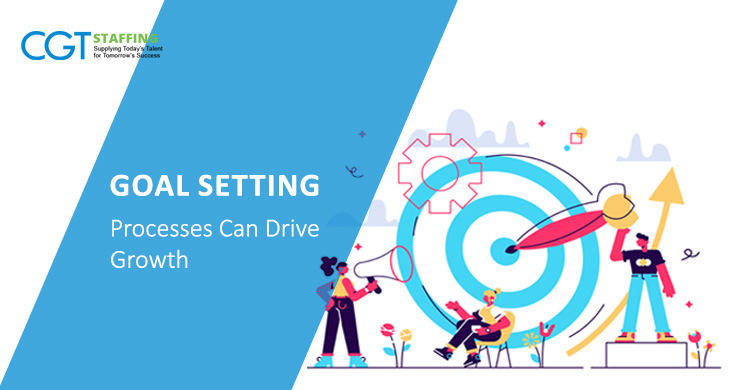All businesses inherently identify profit as a major goal. Profit allows businesses to grow, sustain their growth, expand into new markets, and work on improving their products and services. Profits also allow businesses to hire the right talent for future growth trajectories.
However, without strong goal-setting processes, even the most profitable businesses would be operating with no clear direction. Unless there are clear goals, milestones, and roadmaps to both long-term and short-term objectives, these businesses will likely not be able to sustain themselves. This blog explores why goal setting matters and how you should structure the process.
Table of Contents
Creating a Growth-Centric Goal-Setting Process
Why is a goal-setting process so essential? Strong goal setting does not simply limit its focus to earning profits alone. It also focuses on various other aspects to increase the business’s capacity to earn more profits, such as by updating your talent acquisition strategies to attract the best quality of workers. These workers, when given clear direction, can begin to work towards the growth the business wants to achieve, leveraging their talent and expertise for the benefit of the larger organization.
Goal setting is not a one-time exercise, and usually involves some kind of structured process to work. Here are a few ways you can improve your goal setting to drive your business towards growth in various interconnected areas:
Use Performance Goals to Drive and Sustain Productivity
Businesses rely heavily on the productivity of their teams and individual workers. Every employee adds value to the working of the business as a whole, or they wouldn’t be there for long. But employees who struggle with productivity (as opposed to identified “slackers”) may only need more clarity and definition regarding what is expected from them in their current role.
Performance appraisals may be one of the best ways to help employees understand how they perform against their performance goals. The appraisal can be used to gauge performance and identify key areas that need improvement. Instead of firing workers with low productivity, you can give them definite goals to reach, and help them build their capacity to work more efficiently.
Use Video and Other Visual Mediums to Ensure Goals are Understood
Setting performance goals during an onboarding session is important, even if conducted by a third party like a staffing agency. This sets the tone for the rest of the employer/employee relationship. It is equally crucial to ensure all employees clearly understand the set goals governing their performance. Any confusion or misunderstanding will usually lead to performance issues later on, so it is often more efficient to deal with the problem before it emerges.
One good way to do this is to make use of visual mediums like videos, infographics, and animations to break down goals into digestible chunks that can be explained to workers of nearly any aptitude. This will ensure everyone is on the same page as far as targets and goals are concerned.
Set Challenging But Realistic Goals to Motivate Workers
Goal setting should always be realistic. With few exceptions, you can’t expect your sales team to increase revenue by 400% every month during a pandemic. This most likely won’t happen unless there is a huge surge in demand for your product or service. Meanwhile, failing to meet unrealistic targets will have a detrimental impact on employee morale and motivation, which can often lead to mass resignation. This is especially true in high-turnover industries, as mortgage recruiters will be quick to point out.
But that doesn’t mean you should set goals that are too easy. True balance exists when goals are both realistic and challenging, encouraging your employees to go the extra mile for success. In many cases, challenging goals often lead to professional development among workers, equipping them with everything they need to meet even more challenging targets in the future.
Monitor, Measure, and Adjust Progress against Set Goals
Goal setting needs to be clear and definite. It also needs to be quantifiable and measurable. That is what will allow you to measure progress and identify room for improvement, skill development, or adjustment of the goals themselves. With quantifiable goals, it becomes much easier to pinpoint the exact areas that need attention.
Of course, larger organizations with thousands of employees may find it much harder to keep track of all of their performance. This often leads businesses to use web applications that use data like employee attendance, productivity stats, manager remarks, and much more. However, this also implies the use of improved security which may often be costly. However, a vCISO services consultant can help reduce security expenditures considerably.
